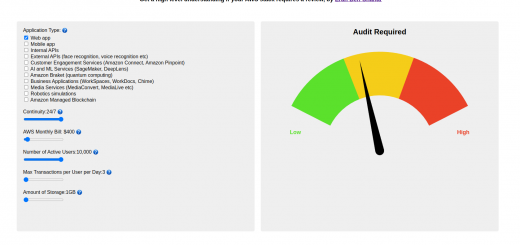How to prepare the best startup pitch for investors
Surprisingly enough, most of the pitch documents that I’m getting are done really badly, or are not good enough to attract investors’ attention. Some of those startups have a calibre of mentors and advisers, and still – the documents that I’m getting are not focused, badly written, badly designed (or overly fancy), and sometimes shameful.
You need to understand that a startup pitch is not written for yourself or for your friends or advisers: it is written to attract the attention of a stranger, someone who most likely is experienced in business, and busy as well. Experienced business people see beyond the bullshit – they are looking for an opportunity, not for a walk in fairy tale. When you do your startup pitch slides, you must know that:
- Investors do not read pitches; they just flick through them very fast.
- You have only one short minute to attract attention and need to achieve this in the first 4 slides – if you fail, most investors will not devote the time to read the rest of it or to communicate with you at all.
- There are lots of time wasters out there, and investors are busy people. Make sure you distinguish yourself from time wasters.
- When you approach investors, do it right. Don’t send information before you ask a person if they are interested in getting it. Respect and get respected. Develop relationship and trust before you ask for help or for money from people.
5 critical basic thumb rules for writing your startup pitch:
- Keep it to no more than 12 slides, 13 slides max, including the title slide and the “thank you” slide. It means that your content must fit within 11 slides at most. Yes, I’m serious, even if you were told differently.
- Every word is gold. Make it short, precise, accurate.
- Never use tiny font, Excel tables, or detailed information. Use just headlines and summaries.
- NEVER use basic stock images. Once content is finished, give it to a professional designer to tidy up. Better not to use images at all than to use stock images.
- A pitch is a result of research – it is not part of your research. Make sure you can stand behind every word and claim that you write in your pitch, with business plans, calculation spreadsheets, references, answers to common questions, and detailed ideas. Get prepared to send them, but only if you are asked to.
The ideal startup pitch: what to include:
The most common scenarios of a startup pitch are: problem -> solution and opportunity/cause -> scaling. Opportunity is when someone else is doing something but not as well as you offer or when you have a unique technology/invention which requires funding before you may get any clients.
- Slide 1: Introduction. This slide should include your vision statement (one sentence) and your contact details.
- Slide 2: Problem. What are you trying to solve (or what are the weaknesses of existing systems/products/processes)?
- Slide 3: Solution. How are you going to solve the problem? This is a high-level page, just to create interest (“oh, looks interesting, let’s see how they plan to do it…”).
- Slide 4: Market. Okay, great – but is your solution wanted by the market? What is the market size (in dollars)?
- Slide 5: Product. Now describe or show your product (“looks nice, let’s see if we can make money out of it”).
- Slide 6: Technology / Intellectual Property. What is unique, smart, or innovative about your startup?
- Slide 7: Business Model. How are we going to make money? Subscriptions? Sales?
- Slide 8: Market Adaptation. How are we going to actually do it? Is there a way to scale/get to market? Have you validated/managed to sell/got income already?
- Slide 9: Competition. Who else is in the market, and what is your advantage?
- Slide 10: The Team. Who are the founders?
- Slide 11: Funding. Describe how much money you want, and what you are willing to give for it (how much equity).
- Slide 12: Thank you – and add your contact details again.
Note that in this format, you have space for one extra slide in case you want to expand on anything else.
Research can take time: The pitch deck is just a reflection of how seriously you have done your research. Proper research of the market size and market adaptation can take time. You must have a serious Excel analysis behind your numbers that can explain your claims.
Make sure your ass is on the line: Investors are not stupid people: if you are not putting your ass on the line for your own startup, why would they? You need to invest your own money to build an MVP, get clients or prove its market validation, design your pitch, get training, etc. Otherwise, it won’t work.
Content: Make sure you don’t have spelling mistakes, grammar mistakes, or typos (if you now tell yourself: “this blog post is not immaculately written, so I could do my pitch on the same level” – you haven’t understood the point: a blog post is not a pitch!). Content must be accurate and sharp. Think about it like text messages or like standing in the middle of a gladiators’ battle while you have 5 seconds to convince the audience to save your life. Give your pitch to at least 5 native English speakers to look at, comment on, and correct mistakes.
Spelling/grammar mistakes will fail a pitch even if your value proposition is good.

Spelling / grammar mistakes will fail a pitch even if your value proposition is good
Design: Once you finish your pitch, hire a professional designer to tidy it up. Don’t over-design it, but make it look respectful and tidy.
Founders and advisers: More than 3 founders are not only bad for your startup, but will repel investors – as the most common failure of companies are disagreements between founders. You want to keep it simple. Also, listing/having more than 3 advisers is bad for your look.
I recommend to NEVER list advisers who are not really involved or do not know the details of what you do, to make this point clear: if you don’t speak with your adviser at least once/twice a month, DO NOT list them as advisers even if they are top famous and supportive of your venture. The reason is that lies will be revealed at some point during the negotiations. If someone famous is supporting you, list them as “supporters.” An adviser is an adviser, a mentor is a mentor, and a supporter is a supporter – always stick to facts.
Good luck,
Eran




Great website. Lots of helpful info here. I’m sending it to a few of my friends. thanks for your hard work!